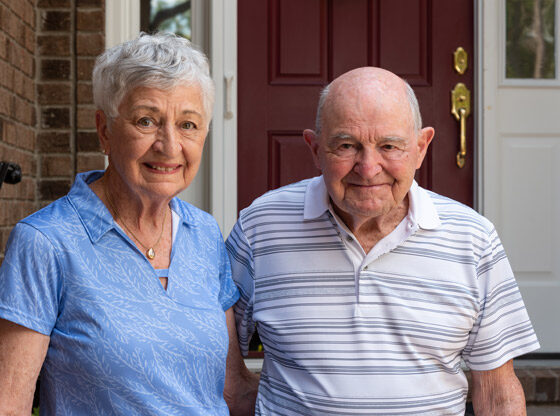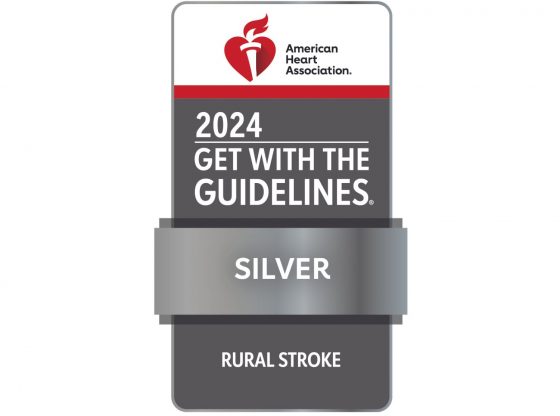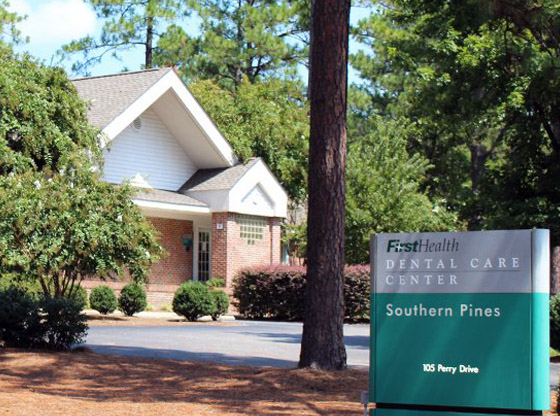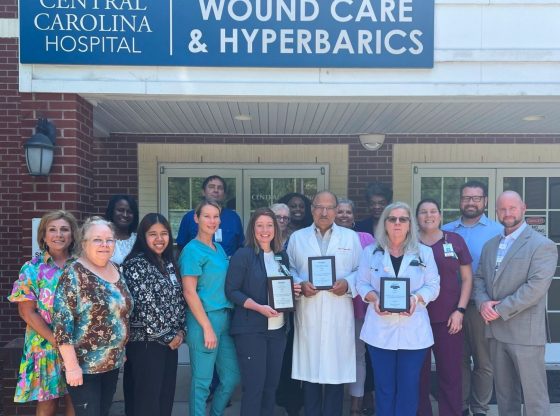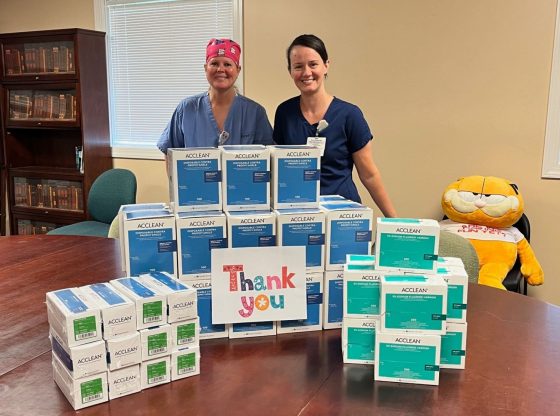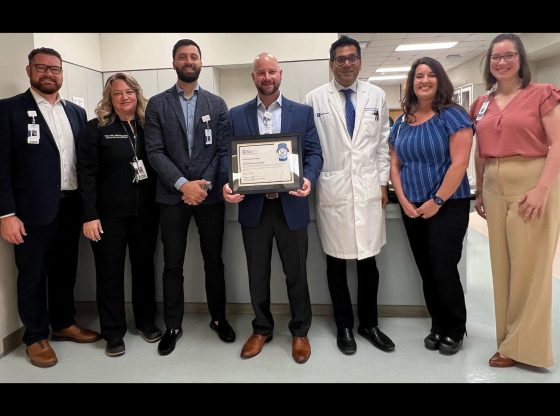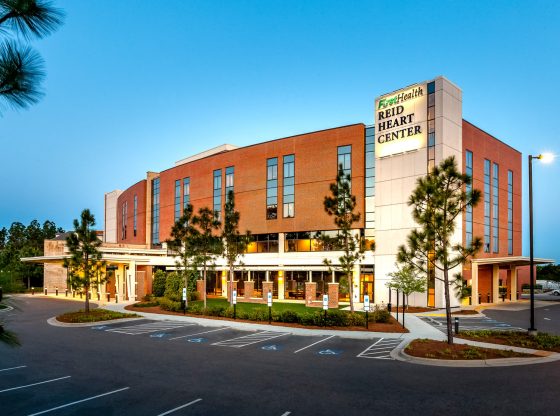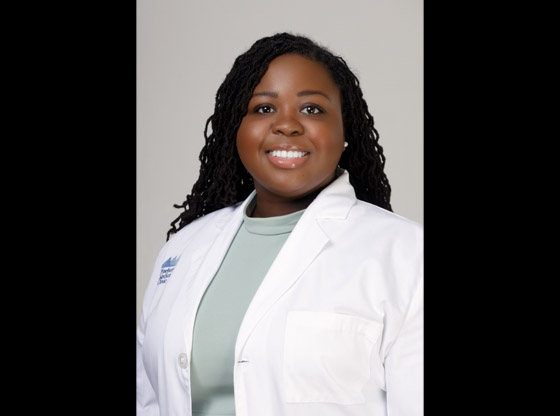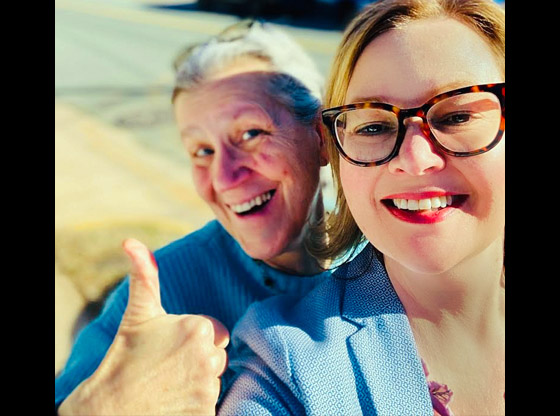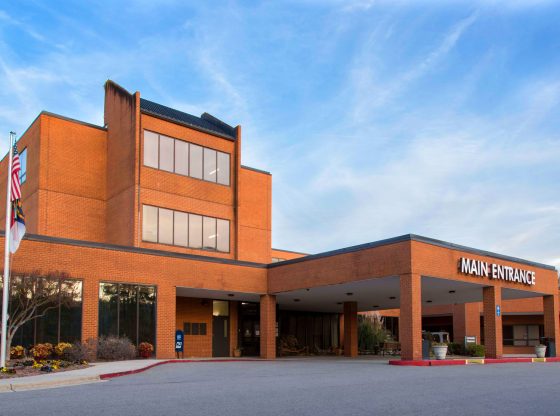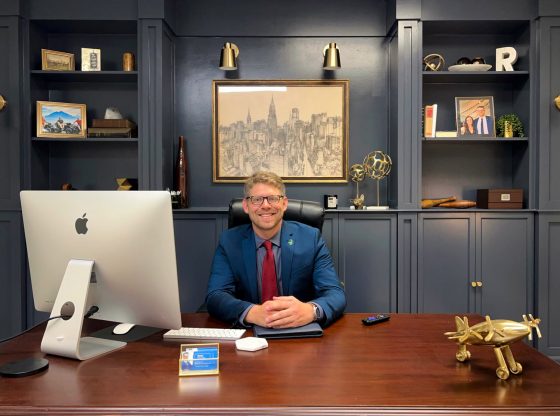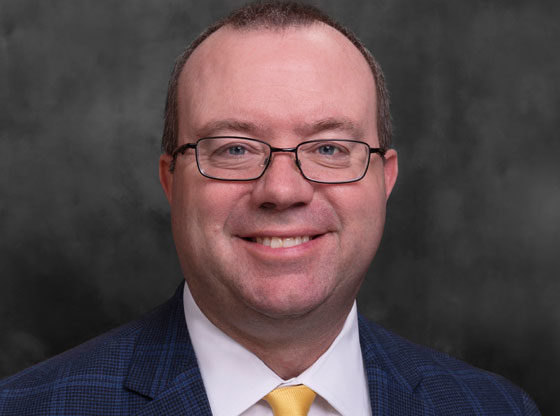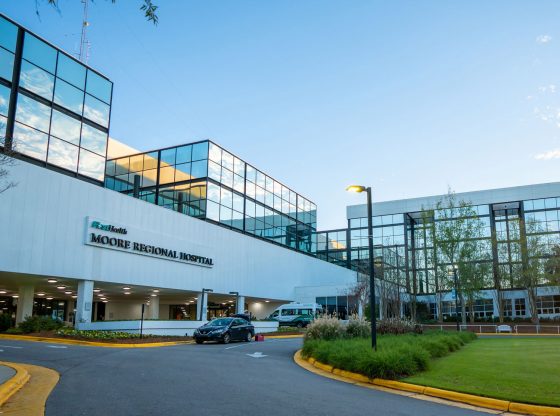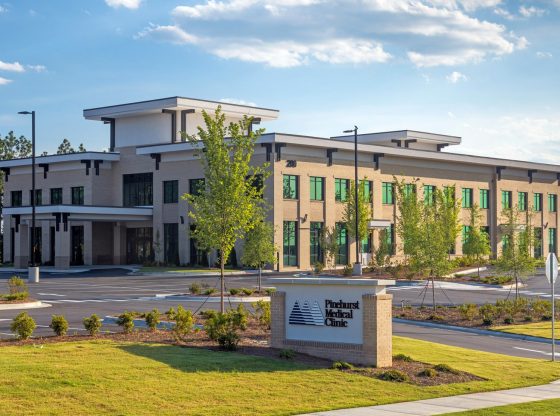Pinehurst resident Jack Mahan is home and healthy today, thanks to his fast-thinking when he started experiencing symptoms of a stroke. In observance of Stroke Awareness Month, Jack and neurohospitalist Steven Lewis, M.D., of FirstHealth of the Carolinas, explained the importance of early detection of stroke symptoms and quick action to get treatment.
Around 5 p.m. on Tuesday, April 12, 2022, Jack rose from his living room sofa and felt unstable. By the time he reached the kitchen, the 84-year-old was bracing himself on the sink to stand. He lost a good bit of control of his right side, particularly in his leg.
Jack said to his wife Marilyn, “I think I’m having a stroke.” Marilyn immediately called 911. When Emergency Management Services (EMS) arrived, Jack’s speech was slurred. Paramedics rushed him to FirstHealth Moore Regional Hospital, calling on the way to report Jack’s symptoms so the emergency department could be ready.
Neurohospitalist Steven Lewis, M.D., received Jack in the emergency department. Based on Jack’s symptoms and an exam, Dr. Lewis confirmed that Jack was having a stroke. At 6:11 p.m., Dr. Lewis administered tissue plasminogen activator (tPA) medicine, also called a “clot buster.”
By 6:30 p.m., Jack felt normal again. His speech and control of his right side had returned. Doctors kept him in the hospital for two nights for observation, and he was back home on the afternoon of Thursday, April 14.
“Jack and Marilyn’s fast action made all the difference,” said Dr. Lewis. “When patients or people nearby notice stroke symptoms and call 911 immediately, there is a much greater chance of a good outcome. Every second counts.”
Dr. Lewis explained that anyone at any age and at any time could get a stroke, and everyone needs to know the warning signs.
Warning signs of a stroke
Stroke symptoms can come on quickly and often include weakness, numbness, confusion, severe headache or difficulty talking or seeing. An easy way to remember stroke symptoms is with the acronym “BE FAST,” which stands for:
B — BALANCE: Is there a sudden loss of balance or difficulty walking?
E — EYES: Is there sudden blurred or double vision or loss of vision in one or both eyes?
F — FACE: Does one side of the face droop or is it numb? Ask the person to smile. Is the smile uneven?
A — ARM: Ask the person to raise both arms. Is one arm drifting downward? Is one weak or numb?
S — SPEECH: Is speech slurred?
T — TIME: Time to call 911.
What is a stroke?
A stroke, also called a brain attack, happens when the brain can’t get the oxygen-rich blood it needs. This can happen in two ways: something blocks the brain’s blood supply (like a clot), or a blood vessel in the brain bursts.
Without the oxygen delivered by the blood, brain tissues start to die within minutes. For each minute that a stroke is left untreated, almost two million brain cells die, and the result can be brain damage, disability and death.
Stroke is the fifth leading cause of death and a leading cause of disability in the United States. Every year more than 795,000 people nationwide have a stroke, or one person every 40 seconds. Every 3.5 minutes, someone dies of a stroke.
The clot-busting tPA medicine Jack received intravenously (IV) reopened his blocked artery and restored blood flow to his brain. When administered within four and a half hours after stroke symptoms begin, tPA can reduce the severity of a stroke.
“That’s why time is critical when you see signs of a stroke,” Dr. Lewis said. “Don’t wait to see if symptoms improve because you could miss the treatment window.” He also advised to call 911 instead of driving to the hospital because EMS can administer initial tests and call to prepare the emergency department ahead of time, as in Jack’s case.
How to reduce the risk of a stroke
While some stroke risk factors such as age, gender and ethnicity are not controllable, Dr. Lewis said more than 80% of strokes are preventable. To reduce the risk of stroke, it’s critical to control high blood pressure and cholesterol levels through lifestyle behaviors and medicine. Specifically, he recommends that everyone:
Eat a healthy diet low in sodium with plenty of fruits and vegetables;
Maintain a healthy weight;
Be physically active;
Don’t smoke and avoid secondhand smoke;
Limit alcohol use; and
Prevent or manage other health conditions such as diabetes and obesity
Jack’s words of wisdom
Jack wants people to learn from his stroke story and be prepared. “Not everyone has clear stroke signals like mine,” Jack said of his symptoms, leading to Marilyn’s 911 call. “I want everyone to know that if you think you’re having a stroke — even just one symptom — call 911 right away. Don’t delay.”
FirstHealth of the Carolinas is recognized nationally as a leader in stroke care. FirstHealth Moore Regional Hospital (MRH) is certified as a Primary Stroke Center by accrediting organization DNV. MRH — Richmond, MRH — Hoke and Montgomery Memorial Hospital are certified Acute Stroke Centers.
In 2021, MRH received the American Heart Association and American Stroke Association Get with the Guidelines Target: Stroke Gold Plus with Honor Roll and Type 2 Diabetes Honor Roll Achievement Awards. MRH — Hoke earned the Stroke Gold Achievement Award. These national awards recognize health care systems that commit to ensuring stroke patients receive the most appropriate treatment according to nationally recognized, research-based guidelines.
Learn more about stroke care at FirstHealth at www.firsthealth.org/stroke and www.firsthealth.org/neurology.
Feature photo: Jack and Marilyn Mahan.
Courtesy photo/Contributed.


